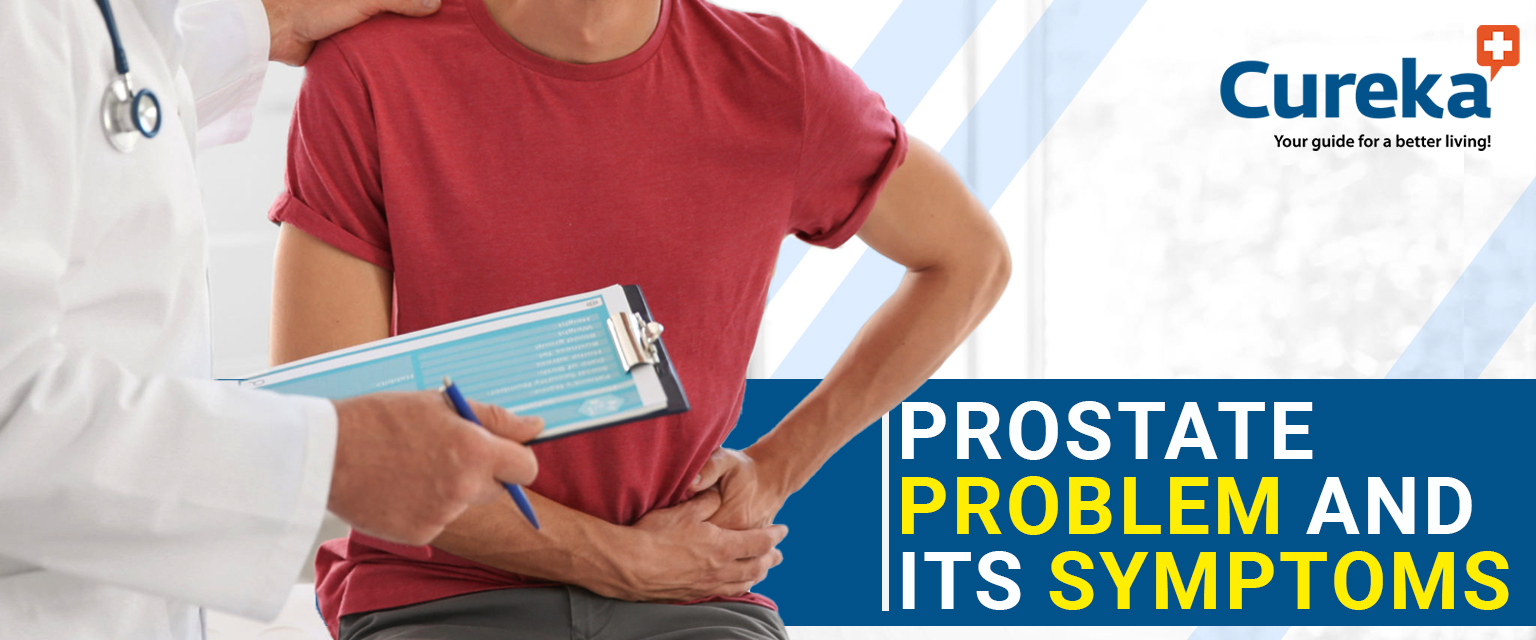Prostate Problem and its Symptoms
What is Prostate?
The prostate is a small-size gland in men, which helps in making semen. Positioned just under the bladder ahead of the rectum, that wraps around a tube, which carries urine as well as semen out from the body. This tends to become larger when you become older. In case, your prostate becomes too large, this may cause many health problems.
Common Issues
‘Let’s take a few examples of some non-cancer prostate difficulties:
Benign Prostatic Hyperplasia (BPH) is extremely common in old men meaning that your prostate gets enlarged but it is not cancerous. BPH Treatments consist of:
- Watchful Waiting or Active Surveillance: In case, your symptoms are not very bad, your doctor might tell you to observe to see if they become worse before you start the treatment. Your doctor would tell you how frequently to come for check-ups.
- Medicines: Medicines may help you shrink your prostate or ease muscles near the prostate for easing symptoms.
- Surgery: In case, nothing works, your doctor might advise surgery to assist urine flow.
- Additional Treatments: At times, radio waves, or lasers can be used for treating urinary problems sourced by BPH. All these methods utilize various types of heat for reducing additional prostate tissues.
Acute Bacterial Prostatitis generally begins suddenly from any bacterial infection. Consult your doctor straight away in case you are suffering from fever, pain, or chills in addition to other prostate symptoms. Mostly, it can be cured using antibiotics. You may also require medications to help with discomfort or pain.
Chronic Bacterial Prostatitis is the infection, which comes back repeatedly. This unusual problem could be difficult to treat. At times, using antibiotics for a longer time might work. Consult your doctor for other things that you may do to assist you to feel well.
Chronic Prostatitis also commonly known as Pelvic Pain Syndrome is very common prostate problem. This may create pain in your lower back, groin, or the tip of your penis. Treatment might need a grouping of medicines, lifestyle changes, and surgery.
Prostate Problem Symptoms
Consult your doctor immediately if you experience any of the given symptoms:
- Blood in semen or urine
- Burning or pain urination
- Dribbling in urine
- Frequent urge for urination
- Need to go to urinate many times in the night
- Painful ejaculation
- Recurrent pain or toughness in the lower back, pelvic, hips, upper thighs, or rectal area
Prostate Disease Diagnosis
The prostate disease can be diagnosed using different tests, including:
- Blood test for PSA (Prostate Specific Antigen)
- Mid-Stream Urine (MSU) test to check for blood or infection in the urine
- Physical examination like Digital Rectal Examination (DRE) in which a doctor inserts gloved fingers in your rectum for checking the prostate size.
- Prostate Biopsies
- Ultrasound Scans with Urinary Flow Studies
Prostate Disease Treatment
Prostatitis treatment may consist of antibacterial drugs as well as supportive treatments as per the prostatitis types.
BPH Treatment might include medications for relaxing smoother muscles of a gland or shrinking the prostate size, and surgery for producing a permanently extended channel in part of your urethra, which passes through your prostate.
Prostate cancer treatment is custom-made to suit specific circumstances. The type of cancer and other health issues a person might have, as well as their wishes, would be considered.
A Management Approach for prostate cancer consists of:
- Active Surveillance
- Chemotherapy
- Hormone Treatment (Androgen Deprivation Therapy)
- Radiotherapy
- Surgery – Prostatectomy (Prostate Removal)
- Watchful Waiting
Conclusion
Having regular health checkups does help you rule out any early signs of prostate problems. If ever you experience any symptoms as discussed above then don’t hesitate to approach your doctor for help. Early diagnosis of prostate problems may help eradicate associated risk factors. One must follow the diagnosis method and treatment plan as suggested by the doctor. Ignoring prostate issue is always risky even if they don’t have any other health issues.











